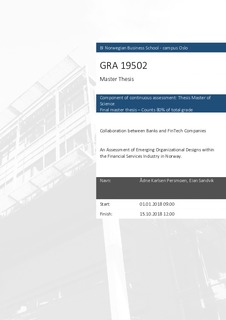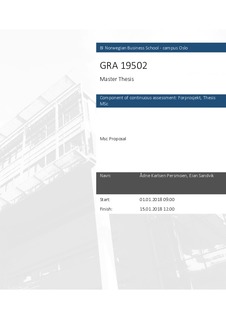| dc.description.abstract | By studying how incumbent banks and FinTechs prepare for PSD2 we have assessed
what organizational designs that will emerge from collaboration between banks and
FinTechs in Norway. We have studied organizational design theory, to discover a
collaborative architecture where a closed network of banks, now is opened for third
parties such as FinTechs, through open API integrations. Using a qualitative case method,
interviewing 11 banks and FinTechs, and using a theoretical background from
Organizational Designs, Networks, Ecosystems, Crowdsourcing, Open Sourcing,
Collaborative Architecture and Disruptive Innovation we find that banks and FinTech
companies are at the learning stages of PS2 integrations through API’s.
The organizational designs that emerge will depend on how well the banks will be able
to facilitate for open API’s integrations. For the banks the type of organizational design
that will emerge will most likely depend who can attract the best and most (FinTechs) to
their platform. The platform with the largest network will be the keystone in the
ecosystems and will gain the network externalities and distribution power of the end
customers. What we are seeing is an organizational architecture that is largely built on
the same mechanisms as typical app stores that we have seen emerging in other industries.
We also argue that for the open API collaboration to function properly, it would rely on
the same mechanisms identified by Fjeldstad et al (2012) where independent actors
(FinTech) self-organize; use commons (the banks platform) where the actors share
resources, and rely on sets of protocols, processes and infrastructure which enable actors
to come together.While the incentives for collaboration for FinTechs to collaborate today
with banks are many, the innovation the FinTechs produce is harder to replicate than the
banks experience in marketing, compliance and other financial services. However, the
network that the banks have is very valuable to the FinTechs, but with the industry
opening for other large networks to enter, the banks must prove their position to become
the keystone platform. | nb_NO |

